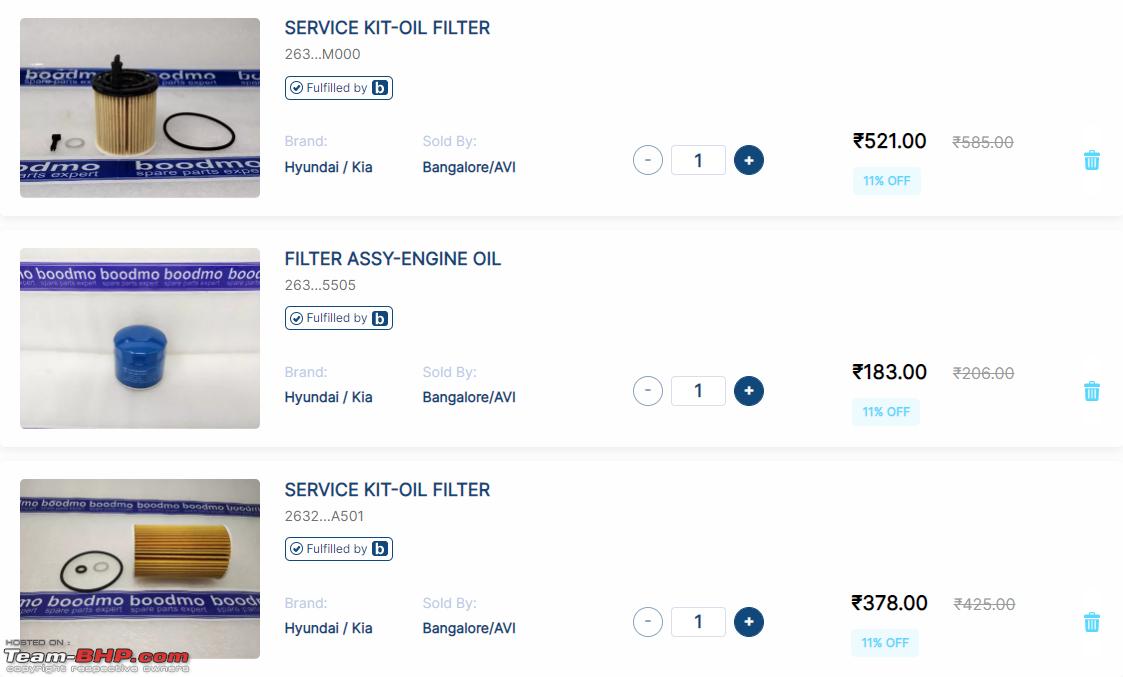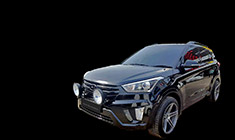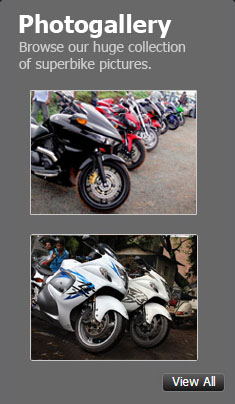News
Explained: 3 types of Hyundai Creta's engine oil filter
The actual filter component in all the 3 engine oil filters of Creta is made of cellulose.
BHPian Chhanda Das recently shared this with other enthusiasts.
The 3 engine oil filters of Hyundai Creta

As some of you may already know, Hyundai basically recommends 3 different engine oil filters for the different engines used in the different Creta models in India. One engine oil filter is the sealed type where the actual filter is housed inside a factory-sealed metal housing assembly. This type of engine oil filter (Part number: 26300-35505) is used for the 1.6 petrol Creta.
The other main type of engine oil filter is the cartridge-type air filter which has to be installed inside the plastic engine oil filter housing assembly in all Cretas other than the one with the 1.6 petrol engine.
Hyundai has two sub-types of this cartridge-type engine oil filter for the Creta. The first type of engine oil filter cartridge has a very basic design (Part number: 263202A501) and is used in all diesel Cretas. The second type of engine oil filter cartridge has a slightly more complex design with a plastic locking pin (Part number: 263502M000) and is used in all second-generation petrol Cretas.
Firstly, let us talk about the construction of these engine oil filters. The one with the sealed metal housing is obviously sturdier than the cartridge-type engine oil filters. Moreover, the filter layers/folds are packed more densely together in the ones with the sealed metal housing. Also, the cartridge-type engine oil filters are installed inside a plastic housing. All the hot engine oil running continuously within a plastic housing is definitely not a good design for the long-term ownership of a car.
I have seen quite a few cases in different cars over the years where the plastic housing of the engine oil filter cartridge and the plastic structure of the cartridge were warped beyond shape due to overheating often caused by a clogged radiator which is not too uncommon in an older car. There is also the fact that the plastic housing assembly of the engine oil filter cartridge can be easily damaged due to overtightening by an inexperienced or inattentive mechanic while servicing the car.
When it comes to the locations where these filters are installed in the cars, that is a whole new discussion:
- The sealed engine oil filter with a metal housing assembly is installed under the car and hence its sturdy construction provides some protection from road debris which is a major advantage on our unpredictable Indian roads. Another advantage of this type of engine oil filter is the ease with which it can be installed and uninstalled. This is the only engine oil filter amongst all three which has to be filled with fresh engine oil before installing it.
- The engine oil filter cartridge with a basic design is installed near the middle of the engine's front between the engine and the radiator fan where there is very little chance of road debris damaging the engine oil filter's plastic housing assembly. Since this particular engine oil filter is installed near the top of the engine, it can be easily inspected without draining the engine oil and this is a major advantage.
- The engine oil filter cartridge with a more complex design is installed under the car in a plastic housing assembly which is a bad choice of design/location since it can be easily damaged by road debris. Also, the locking pin mechanism makes it susceptible to leakages either with minor impacts or due to material degradation with the age of the vehicle. However, using a plastic housing assembly for the engine oil filter reduces the manufacturing costs by a bit at the cost of longevity. But it is quite possible that maybe Hyundai does not want cars to last more than the maximum warranty period of 7 years which coincidentally also happens to be the maximum age of a vehicle eligible for a government-mandated recall.
Finally, let us talk about prices. Have you ever been to a fancy restaurant where they charge you more for less food? Anyone who has had to deal with all these types of oil filters can tell you that it costs way lesser to make the cartridge-type engine oil filter compared to the sealed metal one. However, they sell the cartridge ones at higher prices compared to the metal ones. Please note that the actual filter component in all three engine oil filters of the Creta is made of cellulose. This is proven by the fact that all Cretas have the exact same normal engine oil replacement service interval of 10k kms and the engine oil filters made of synthetic materials, glass fibres, etc cost way more.
In summary, I like the engine oil filters with a metal housing the most and the engine oil cartridge-type filters with a locking pin the least, all things considered. The pricing structure is just the icing on the cake.
Disclaimer: These are solely my personal opinions.
Wish you all happy and safe drives ahead.
Here's what BHPian Jeroen had to say about the matter:
Thanks for pointing out some of the relevant differences between these filters. The most important part of a filter is of course how well does if filter. If it doesn’t do a good enough job of filtering, everything else is immaterial.
Filters tend to be made by many different manufacturers and come at a vast price range for what might appear the same sort of filter.
There are, however, huge differences. The most expensive filter is not necessarily the best!
Check out this video.
As with any car forum anywhere in the world, we have various threads on lubrication oil. I have said it many times, the filter is equally important! The reason most car filters and oil changes are done together is not necessarily due to the oil needs replacing, but the filter!
Here's what BHPian lxskllr had to say about the matter:
You guys should check out this YouTube video. Beautifully explained. The title mentions Toyota, but it is relevant to the discussion!
Check out BHPian comments for more insights and information.



















